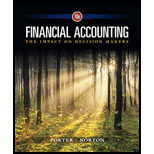
Concept explainers
Blue Jay Delivery Service is incorporated on January 2 and enters into the following transactions during its first month of operations:
January 2: Filed articles of incorporation with the state and issued 100,000 shares of capital stock. Cash of $100,000 is received from the new owners for the shares.
January 3: Purchased a warehouse and land for $80,000 in cash. An appraiser values the land at $20,000 and the warehouse at $60,000.
January 4: Signed a three-year promissory note at Third State Bank in the amount of $50,000.
January 6: Purchased five new delivery trucks for a total of $45,000 in cash.
January 31: Performed services on account that amounted to $15,900 during the month. Cash amounting to $7,490 was received from customers on account during the month.
January 31: Established an open account at a local service station at the beginning of the month. Purchases of gas and oil during January amounted to $3,230. Blue Jay has until the 10th of the following month to pay its bill.
Required
- Prepare journal entries on the books of Blue Jay to record the transactions entered into during the month.
- Prepare a trial balance at January 31.
- Prepare an income statement for the month of January.
- Prepare a classified
balance sheet at January 31. - Assume that you are considering buying stock in this company. Beginning with the transaction to record the purchase of the property on January 3, list any additional information you would like to have about each of the transactions during the remainder of the month.
Trending nowThis is a popular solution!

Chapter 3 Solutions
Financial Accounting: The Impact on Decision Makers
 Financial Accounting: The Impact on Decision Make...AccountingISBN:9781305654174Author:Gary A. Porter, Curtis L. NortonPublisher:Cengage Learning
Financial Accounting: The Impact on Decision Make...AccountingISBN:9781305654174Author:Gary A. Porter, Curtis L. NortonPublisher:Cengage Learning College Accounting, Chapters 1-27AccountingISBN:9781337794756Author:HEINTZ, James A.Publisher:Cengage Learning,
College Accounting, Chapters 1-27AccountingISBN:9781337794756Author:HEINTZ, James A.Publisher:Cengage Learning, Individual Income TaxesAccountingISBN:9780357109731Author:HoffmanPublisher:CENGAGE LEARNING - CONSIGNMENT
Individual Income TaxesAccountingISBN:9780357109731Author:HoffmanPublisher:CENGAGE LEARNING - CONSIGNMENT





